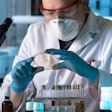Dear LabPulse Member,
There's no shortage of innovation in the development of new diagnostics for point-of-care use. Among the latest wave of models to emerge is a new portable platform from Cleveland-based startup Diascopic that enables the rapid review of microscopic specimens.
The company initially is focused on developing its platform for use in Africa to detect Mycobacterium tuberculosis -- the bacterium that causes tuberculosis (TB). However, Diascopic believes it could have a wider application in other diseases and in multiple geographies, contributing writer Joseph Constance reports.
Using the system, it's possible to detect TB in a single sample in less than 60 seconds, according to the company, which is aiming to commercialize the test in six months to one year. Diascopic also plans to evaluate the platform's potential in malaria and cervical cancer, among other diseases.
In other news related to infectious disease, Roche's cobas vivoDx test for methicillin-resistant Staphylococcus aureus (MRSA) was just cleared by the U.S. Food and Drug Administration through the agency's de novo premarket review pathway. The test uses a new bacteriophage technology based on bioluminescence and can detect MRSA from nasal swab samples in as few as five hours, according to the company.
Meanwhile, international health services researchers have been taking a closer look at the economics of testing. Investigators in Vancouver tallied direct, indirect, and follow-up costs associated with noninvasive prenatal testing (NIPT) and concluded that although NIPT was more accurate than other methods for picking up Down syndrome, it was still more cost-effective for the Canadian healthcare system to reserve it as a second-line screening tool.
In a separate study, U.K. researchers took a close look at vitamin D prescribing patterns among primary care physicians and found a lot of room for improvement. In the study of records for 2 million children, they found a dramatic increase in prescribing that sometimes was out of line with national guidance. The data suggest potential savings for the U.K. system amid global public debate about the value of testing vitamin D levels and supplementation with prescription or over-the-counter products.
Another area of public concern is exposure to bisphenol A (BPA) -- a chemical used in plastics, epoxy resin, and thermal receipts. In a study published in Lancet Diabetes & Endocrinology, researchers described a direct method for measuring BPA that they say is more accurate than current tests and shows an alarmingly higher level of exposure than what conventional wisdom has suggested and what regulatory authorities have accepted.
What does this mean for our understanding of the potentially disruptive effects on the human endocrine system? It's going to take some time and further analysis to tease that out, according to the researchers.









